Nestled on the stunning Monterey Peninsula, Pebble Beach is an enchanting enclave celebrated for its dramatic coastline, ancient cypress trees, and world-class golf courses. This unique blend of natural beauty and luxury living makes 17-Mile Drive a bucket-list destination for many. Managed by Pebble Beach Resorts, the privately owned scenic road promises breathtaking views and access to 17 curated stops along its route.
With a $12.50 per vehicle entrance fee, 17-Mile Drive is marketed as a must-see. After exploring it with our dogs, Maple and Tinkerbell, we left with mixed impressions. While some stops, like The Lone Cypress and Ghost Trees, lived up to the hype, much of the drive felt repetitive, especially compared to nearby alternatives like Point Lobos State Natural Reserve or Carmel Beach. This guide dives into each stop, our honest takes, and tips to decide if 17-Mile Drive is worth your time and money.
Heads up: As we are reader-supported, this article may contain affiliate links. This means if you click on any of the links and make a purchase, we might get a small commission at no extra cost to you. The integrity of our content is really important to us – we only recommend items that we use and love.
Table Of Contents
- What to Know Before You Go
- Stops Along the Iconic Road
- Shepherd’s Knoll
- Huckleberry Hill
- Spanish Bay Beach
- The Restless Sea
- Point Joe
- China Rock
- Bird Rock
- Seal Rock Picnic Area
- Fanshell Beach Overlook
- Cypress Point Lookout
- Crocker Grove
- The Lone Cypress
- Ghost Trees at Pescadero Point
- Pebble Beach Visitor Center
- Pebble Beach Golf Links
- The Hay
- Ford Meadow
- Final Thoughts on the drive
- FAQs
What to Know Before You Go
17-Mile Drive is a privately owned scenic road managed by Pebble Beach Resorts, winding through an exclusive community of luxurious homes and world-famous golf courses. Visitors are welcome year-round, but it’s important to respect the residential nature of the area and follow posted signs regarding access and parking.
Operating Hours
The gates to 17-Mile Drive are open to the public from sunrise to sunset. However, these hours can vary slightly depending on the time of year, so it’s a good idea to confirm with Pebble Beach Resorts before planning your visit.
Entry Fee
The entrance fee is $12.50 per vehicle, payable by credit card or cash at any of the five gates (Highway 1 Gate, Pacific Grove Gate, Carmel Gate, S.F.B. Morse Gate, or Country Club Gate). Motorcycles are prohibited, and pedestrians or bicyclists entering without a vehicle must confirm access with the gate staff, as rules can vary.
Best Time to Visit
Early morning or late afternoon is ideal for avoiding crowds and enjoying soft, golden-hour lighting for photos. Midday visits tend to be busier, especially during weekends and holidays, so plan accordingly. Late spring and early summer are particularly scenic, with blooming flowers and lush greenery enhancing the coastal views.
How to Get There
Most visitors enter via the Highway 1 Gate, just off the Pacific Coast Highway near Monterey, making it easy to incorporate into a road trip through California’s Central Coast. You can also enter via the Carmel Gate if you’re coming from Carmel-by-the-Sea. While driving your own vehicle is the most convenient way to experience the drive, bicycles are allowed, and electric bikes are increasingly popular among visitors. Guided tours in shuttles or private cars are also available for those who prefer not to drive themselves.
Dog-Friendly Policy
Dogs are welcome on a leash at most stops, making this a fantastic outing for pet owners. Be sure to bring waste bags and water for your furry companions, as amenities for pets can be limited along the route.
How Much Time to Budget
Plan for 2-3 hours if you want to visit all 17 stops at a leisurely pace, allowing time for short walks, photo opportunities, and a picnic. If you’re focusing only on the highlights, you can complete the drive in about 1.5 hours.
Stops Along The Iconic Drive
Before diving into the details of each stop, it’s helpful to get an overview of 17-Mile Drive and what to expect. The route loops through the private Pebble Beach community, starting at one of five entry gates (most visitors enter via the Highway 1 Gate near Monterey) and winding through a mix of forested areas, oceanfront cliffs, and residential neighborhoods.
The drive covers – you guessed it -17 miles, with 17 marked stops highlighting key points of interest, from historical landmarks to natural wonders. To help you plan your visit, here’s a map of the drive, showing the layout of the stops and the overall flow of the route. Whether you want to explore every landmark or just focus on the highlights, having a map handy ensures you won’t miss a thing.
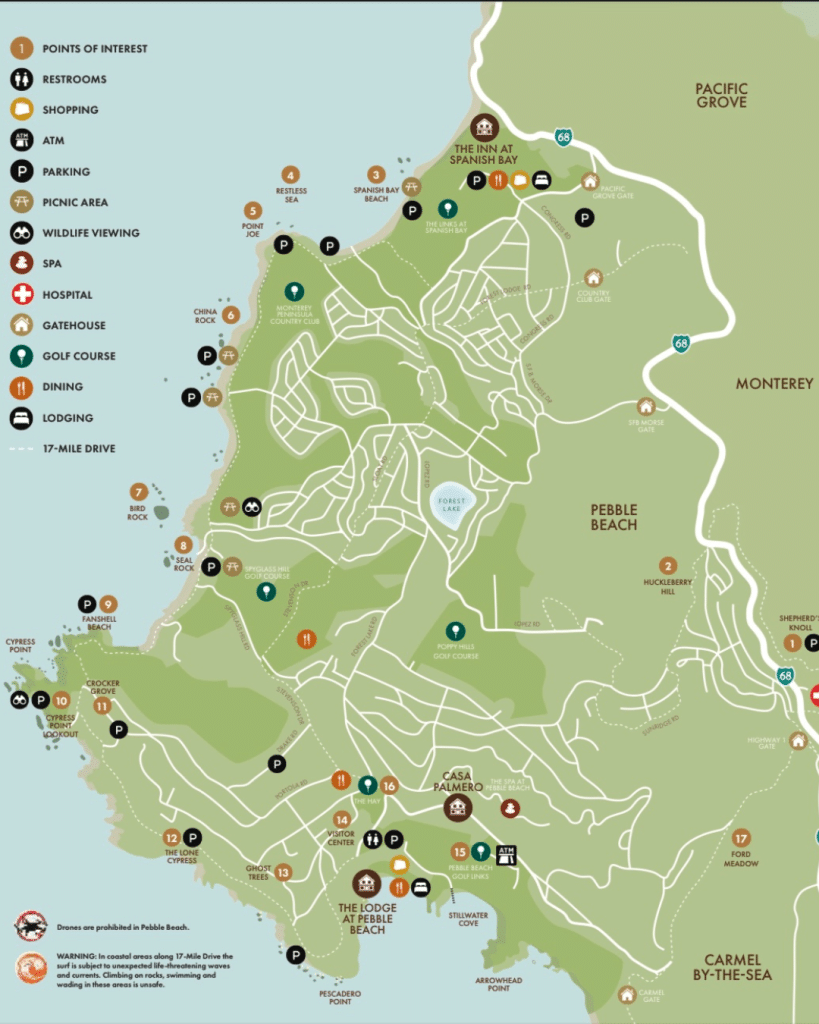
1. Shepherd’s Knoll – Stop 1 of the 17-Mile Drive

The first stop offers an elevated view of Monterey Bay and the Santa Cruz Mountains. Named after Abraham D. Shepard, a railroad pioneer who developed the upper route through the Del Monte Forest, Shepherd’s Knoll is more historically significant than visually striking.
Our Take: The view felt blocked by trees, and nothing about this stop stood out. If you’re looking for expansive coastal scenery, alternatives like Point Lobos deliver more vibrant and open views.
2. Huckleberry Hill – Stop 2 of the 17-Mile Drive
This stop boasts treetop views of the forest, with glimpses of Santa Cruz in the distance. Its preserved huckleberry-filled hills are rumored to have inspired literary legends like John Steinbeck and Robert Louis Stevenson.
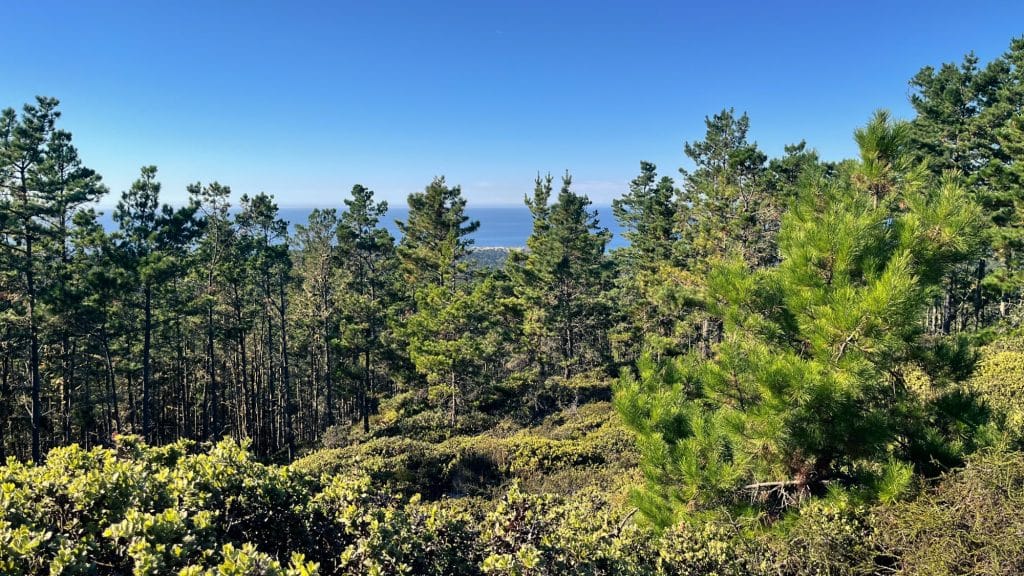
Our Take: While the literary connection adds charm, the scenery was lackluster during our October visit. Huckleberry Hill might be more appealing in late spring or early summer when the bushes are blooming and add color to the landscape.
3. Spanish Bay Beach – Stop 3 of the 17-Mile Drive
Named after Spanish explorers who camped here in 1769, Spanish Bay Beach features a rugged coastline and sandy shore perfect for a short walk. However, many of the boardwalks were closed during our visit, limiting access to the area.
Our Take: Maple and Tinkerbell enjoyed their stroll, but we felt this stop lacked wow factor. Nearby Carmel Beach offers a more immersive and dog-friendly beach experience without an entry fee.
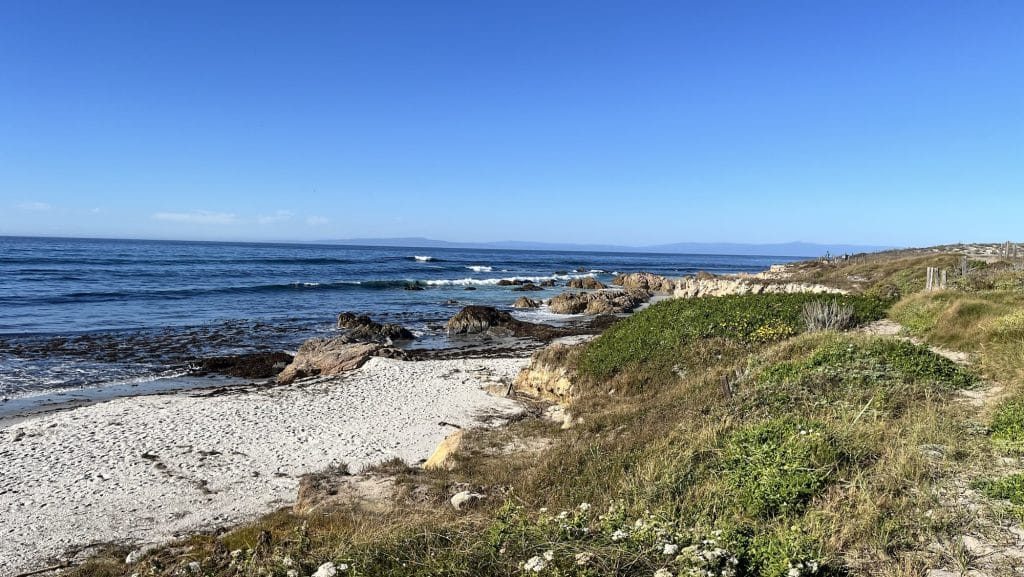

4. The Restless Sea – Stop 4 of the 17-Mile Drive
This stop is one of the drive’s more dramatic features, with submerged rocks creating a constant collision of waves. The churning waters here embody nature’s raw energy and are mesmerizing to watch.
Our Take: The waves were hypnotic, and the sound added to the experience, but it’s essentially a quick pull-out with no trails or additional features to explore.
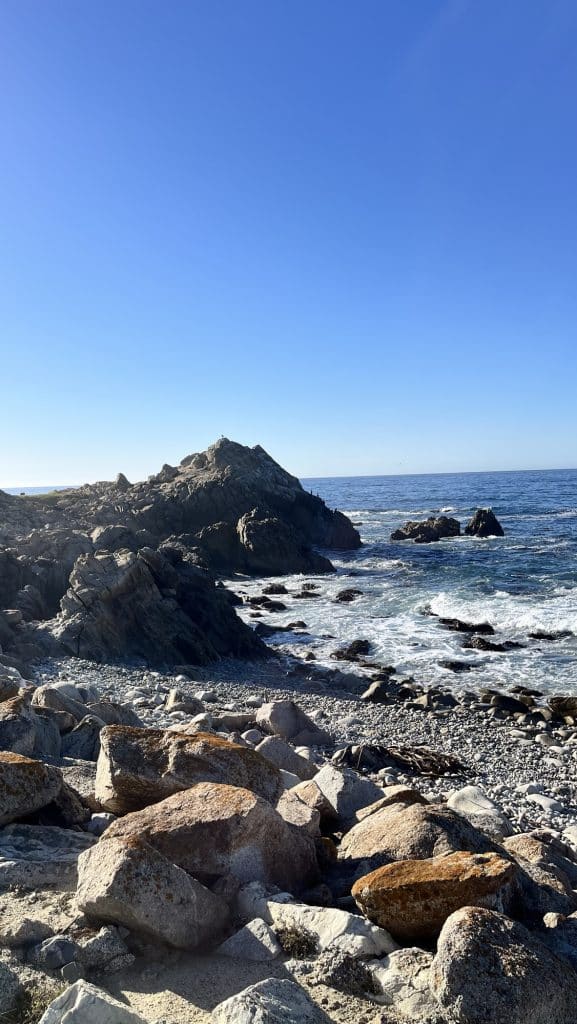
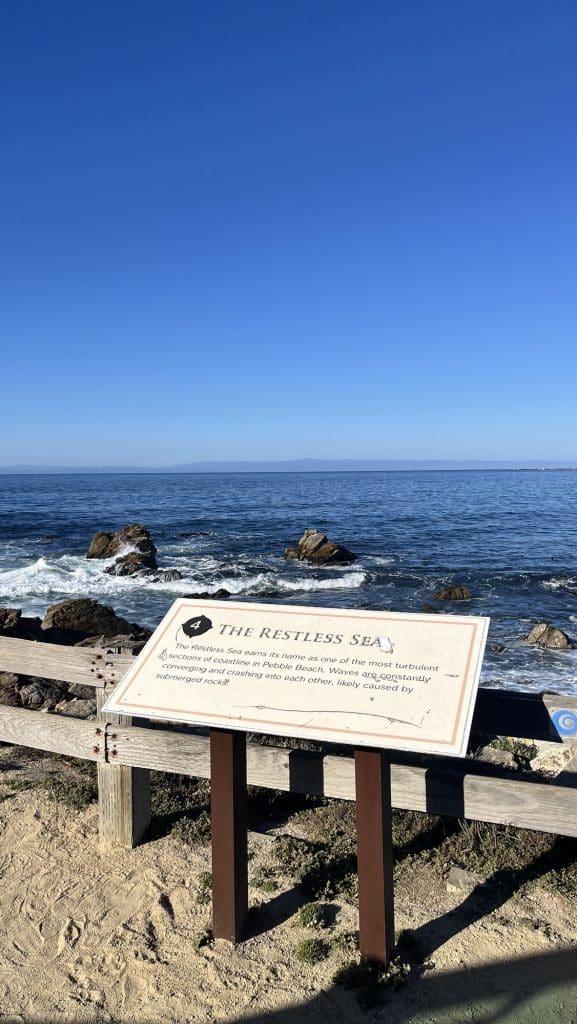
5. Point Joe – Stop 5 of the 17-Mile Drive

Steeped in maritime history, Point Joe is where early sailors often mistook the rocky outcrop for the entrance to Monterey Bay, leading to numerous shipwrecks. The site is named for a man who lived in a driftwood hut here, selling trinkets to tourists.
Our Take: The story adds intrigue, but the stop itself is visually similar to other rocky shoreline pull-outs. For more compelling maritime history, consider the Point Pinos Lighthouse nearby.
6. China Rock – Stop 6 of the 17-Mile Drive
This historic site was once a small Chinese fishing village in the late 1800s. The soot-stained rocks serve as a reminder of the fishermen who once called this area home.
Our Take: We found the historical aspect interesting but agreed that it lacks visual impact. If you’re interested in cultural history, Monterey’s Cannery Row offers richer experiences with more interactive exhibits.
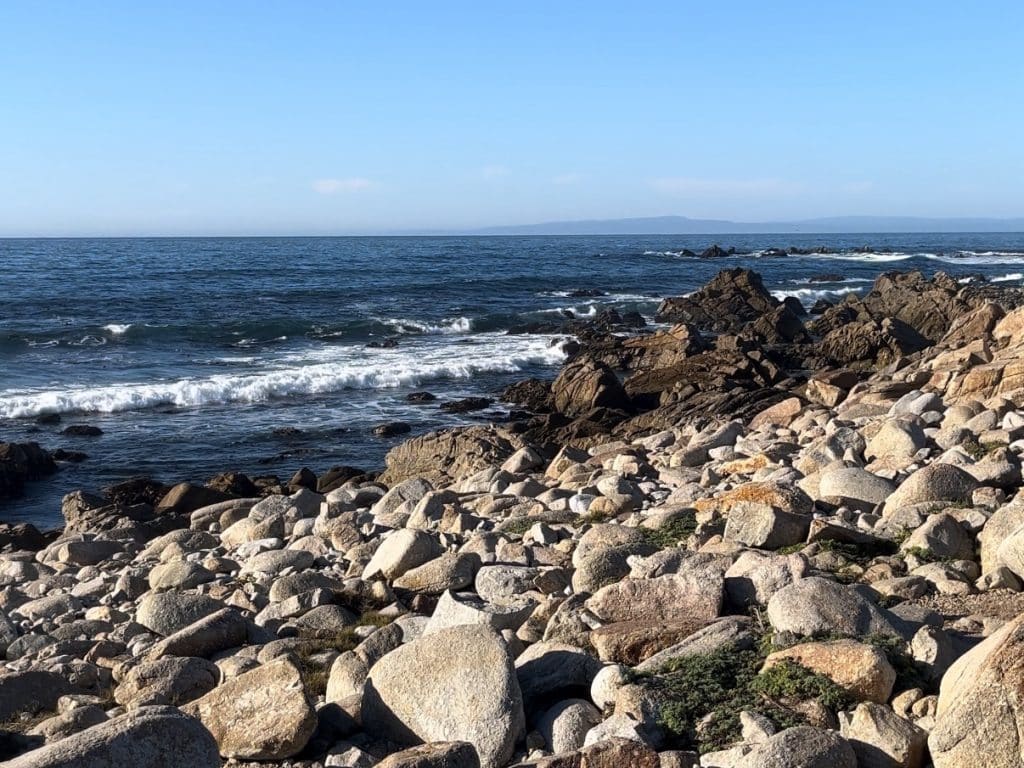
7. Bird Rock – Stop 7 of the 17-Mile Drive
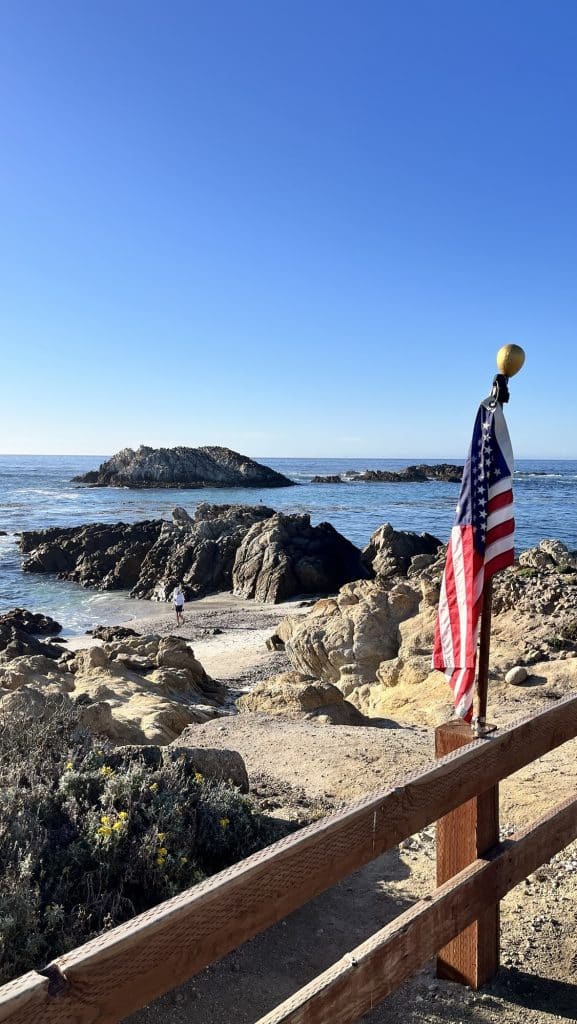
Bird Rock is a bustling wildlife haven, with sea lions, harbor seals, and seabirds vying for space. From November through March, keep an eye out for migrating gray whales offshore.
Our Take: Maple and Tinkerbell were fascinated by the sounds of the birds in the distance, but we found the wildlife less accessible than at Point Lobos, where closer encounters and more diverse species are common. Binoculars are a must here.
8. Seal Rock Picnic Area – Stop 8 of the 17-Mile Drive
Seal Rock features picnic tables, tide pools, and a short boardwalk to the quirky “Gingerbread House,” a private residence with a colorful roof. The tide pools are great for curious explorers.
Our Take: The boardwalk and picnic area made this a pleasant stop, but the tide pools weren’t as vibrant as others we’ve seen along the coast. Still, it was a fun break for the dogs and it’s a good spot for lunch.
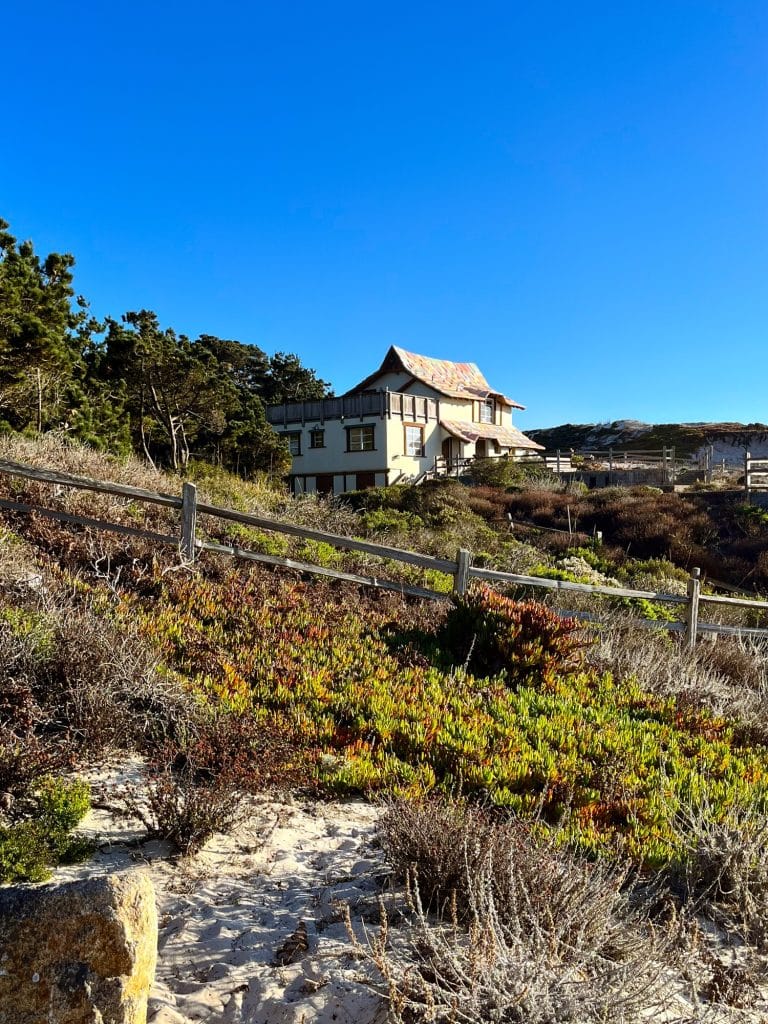
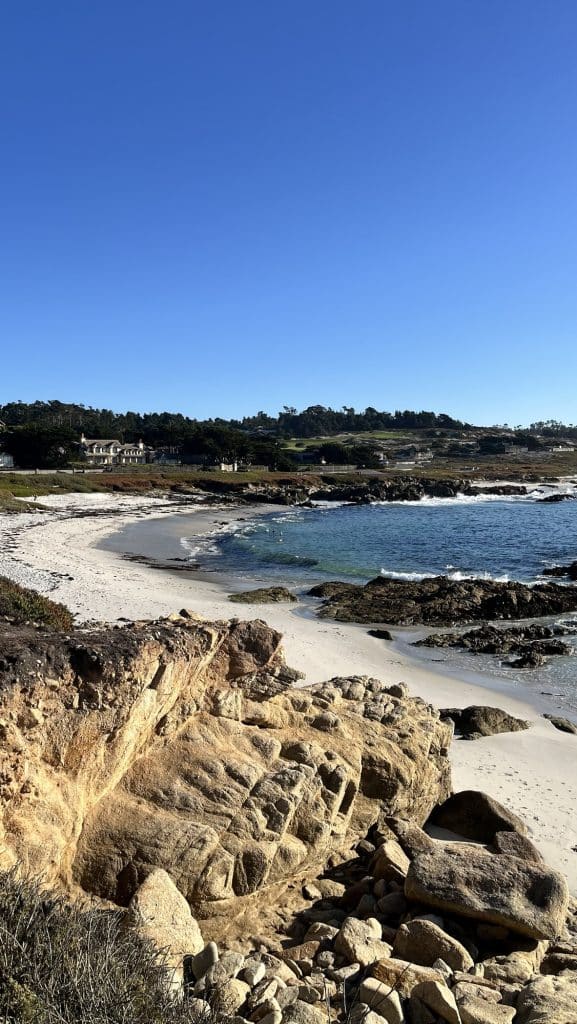
9. Fanshell Beach Overlook – Stop 9 of the 17-Mile Drive
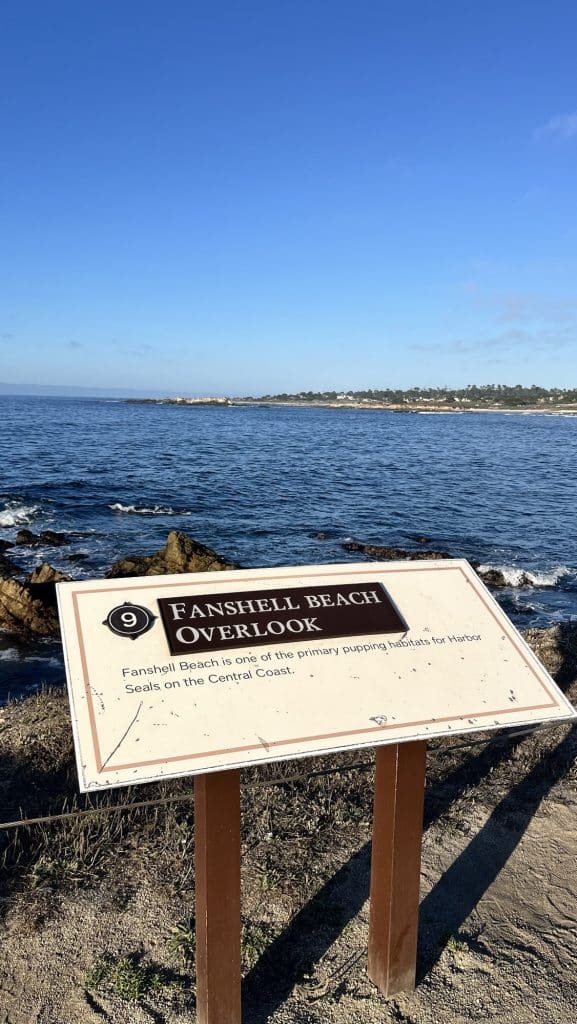
This serene beach is closed from April to June to protect harbor seals during pupping season, but outside those months, it offers uninterrupted coastal views.
Our Take: Watching the seals was a highlight, but the restricted access limits what you can do here. It’s a quick stop unless the wildlife is particularly active.
10. Cypress Point Lookout – Stop 10 of the 17-Mile Drive
Cypress Point Lookout provides stunning ocean views and is a top spot for sunsets. Unfortunately, the chain-link fence surrounding the area detracts from the beauty.
Our Take: The potential here is undeniable, but the fencing made it feel less special. Without the obstruction, this could have been a standout stop.
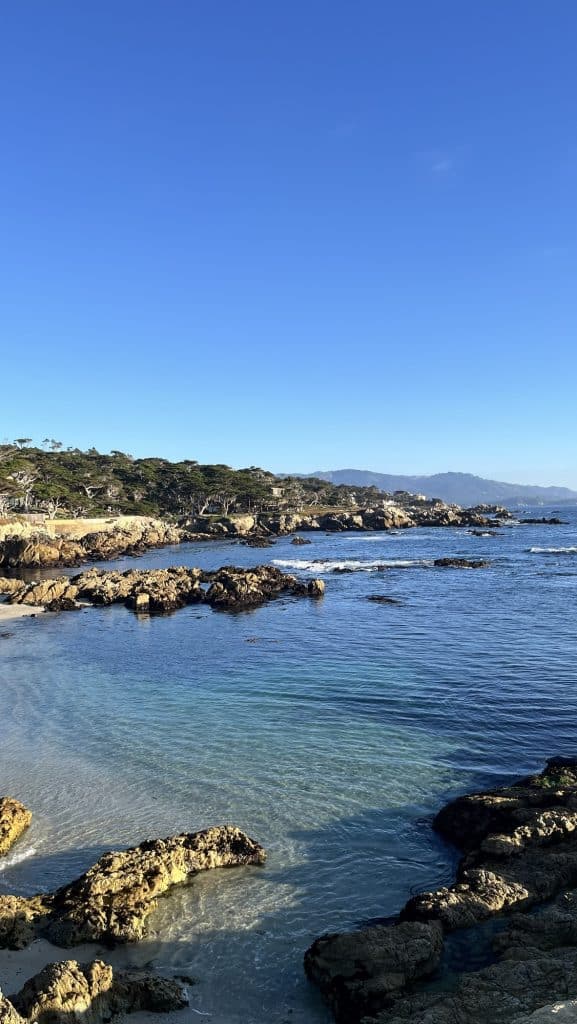
11. Crocker Grove – Stop 11 of the 17-Mile Drive
Home to the oldest and largest Monterey cypress trees, Crocker Grove is a tribute to Charles Crocker, one of the drive’s original developers.
Our Take: While the grove is historically significant, visitors aren’t allowed to walk among the trees, which made this stop feel more passive than engaging.
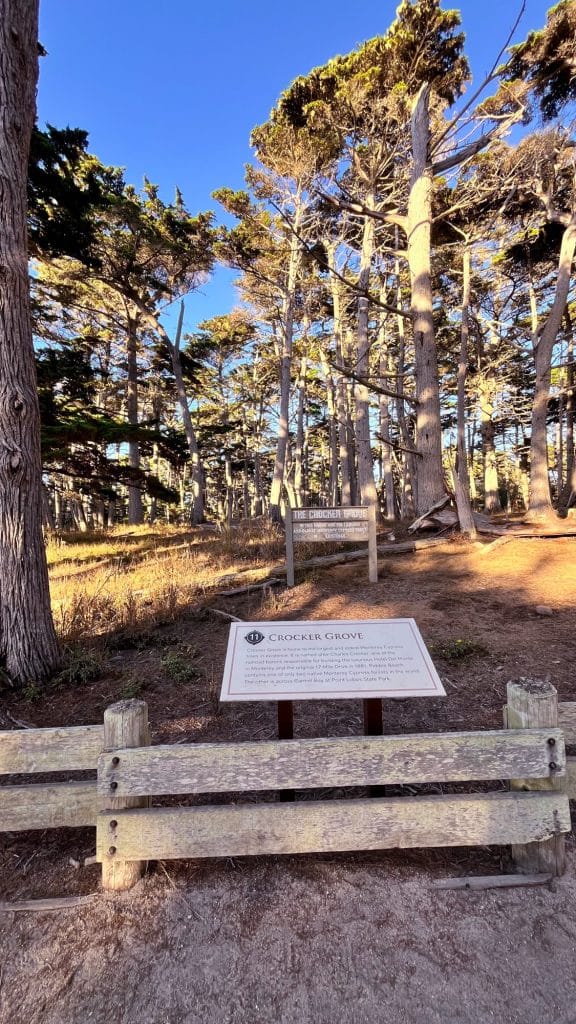
12. The Lone Cypress – Stop 12 of the 17-Mile Drive
This 250-year-old tree perched on a rocky pedestal is the undeniable highlight of 17-Mile Drive. The Lone Cypress is resilient, iconic, and awe-inspiring.
Our Take: This stop exceeded our expectations. The setting is magical, and it’s easy to see why it has become a symbol of Pebble Beach. Visiting at golden hour elevated the experience.
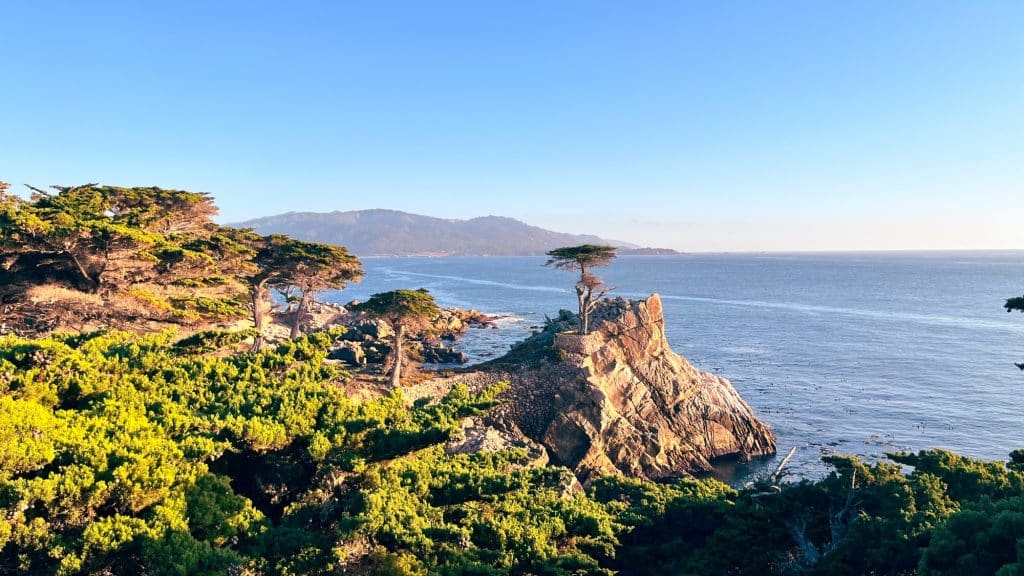
13. Ghost Trees at Pescadero Point – Stop 13 of the 17-Mile Drive
These skeletal, wind-sculpted trees create a hauntingly beautiful landscape. Ghost Trees is also a legendary surfing spot known for its massive winter swells.
Our Take: The eerie, otherworldly feel of this stop made it one of our favorites. The unique atmosphere and striking visuals are worth the visit.
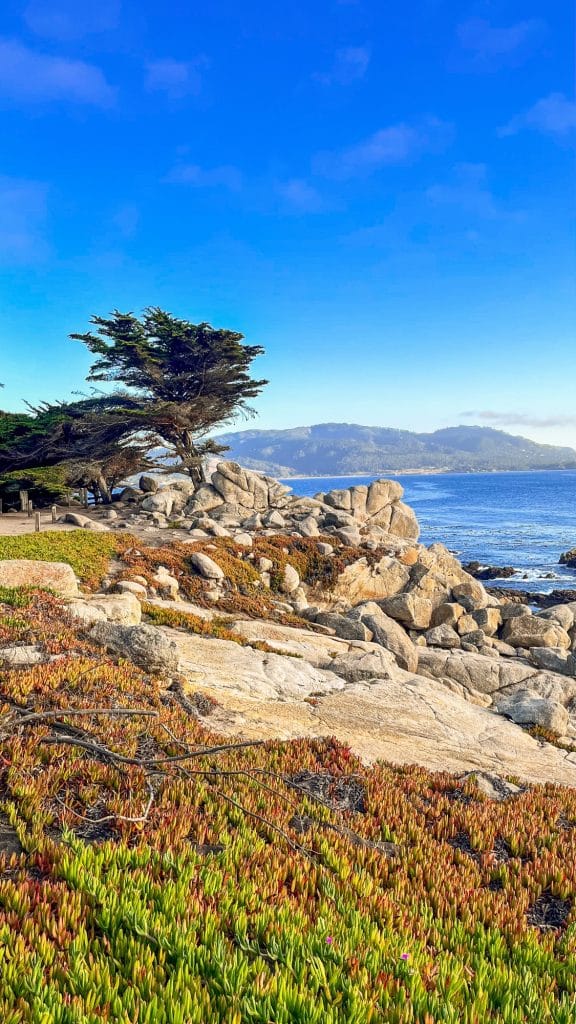
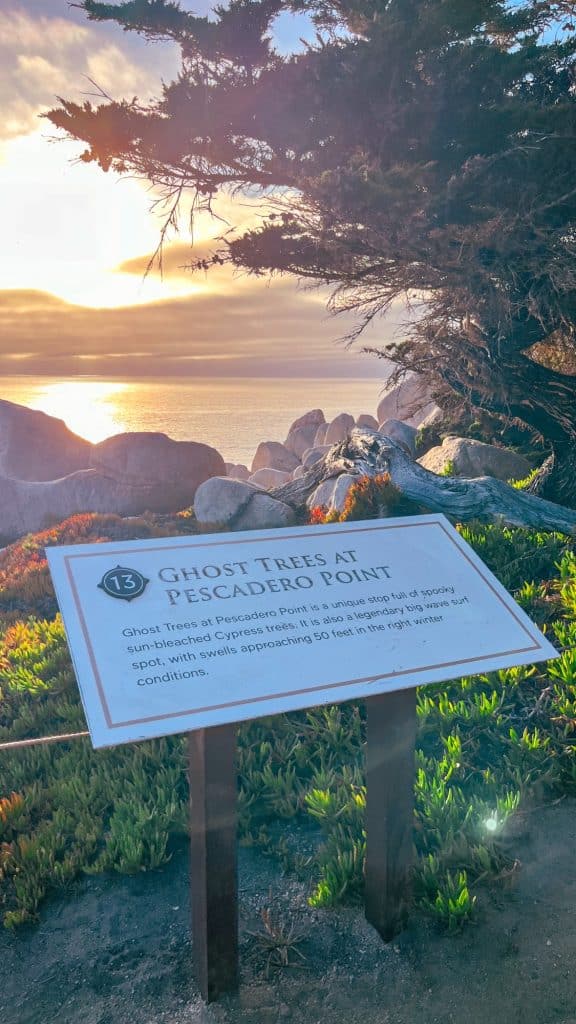
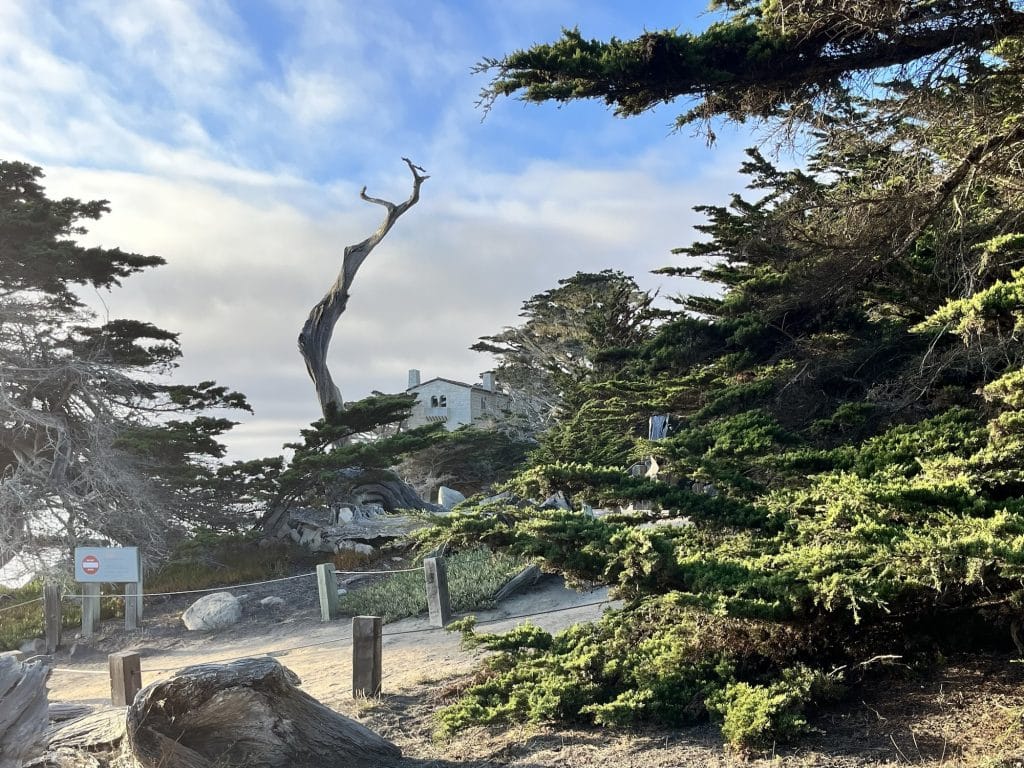
14. Pebble Beach Visitor Center – Stop 14 of the 17-Mile Drive
This stop includes exhibits on Pebble Beach’s history and a gift shop. It’s a good place to learn about the area’s transformation into a luxury destination.
Our Take: While informative, it felt unnecessary as one of the drive’s official stops. If you’re pressed for time, this can easily be skipped.

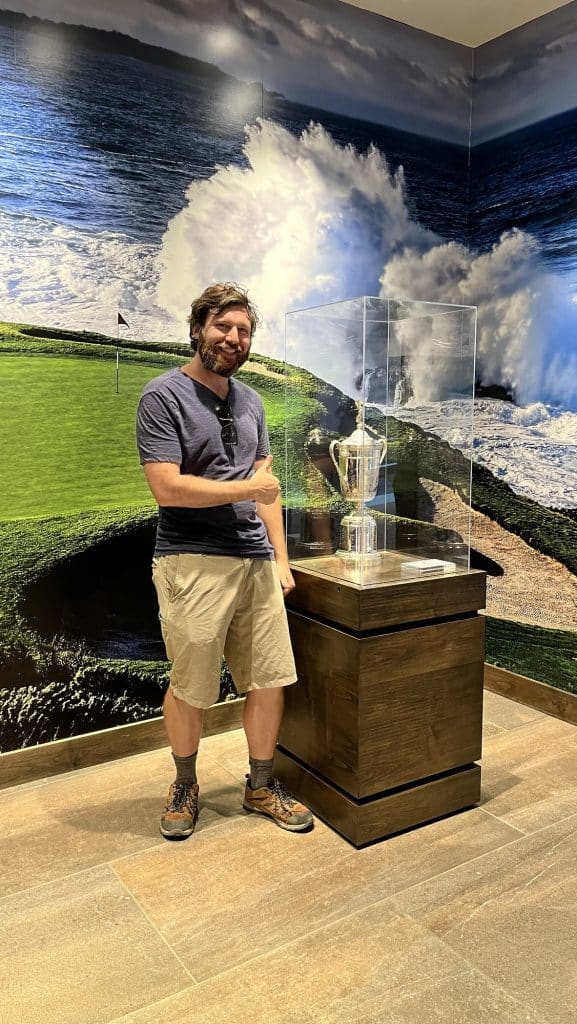
15. Pebble Beach Golf Links – Stop 15 of the 17-Mile Drive
This world-renowned golf course is a dream destination for golf enthusiasts, with stunning views of the first and 18th holes.
Our Take: A bucket-list stop for golfers, but for non-golfers like us, it felt like just another manicured course with a nice backdrop.
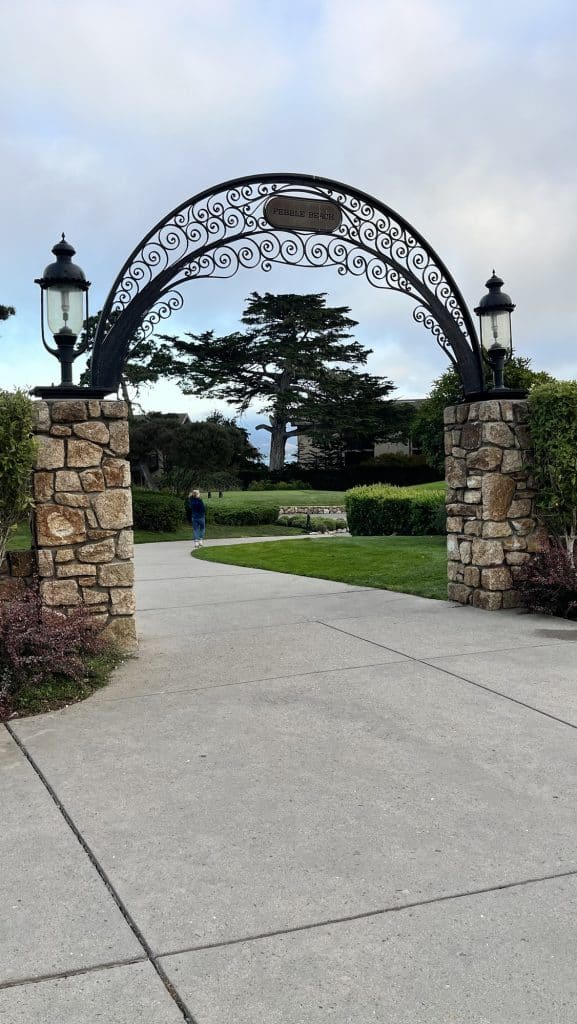
16. The Hay – Stop 16 of the 17-Mile Drive
Designed by Tiger Woods, this par-3 course is a more casual and family-friendly golfing experience.
Our Take: Great for golfers, but not particularly relevant for most visitors exploring 17-Mile Drive for its natural beauty.
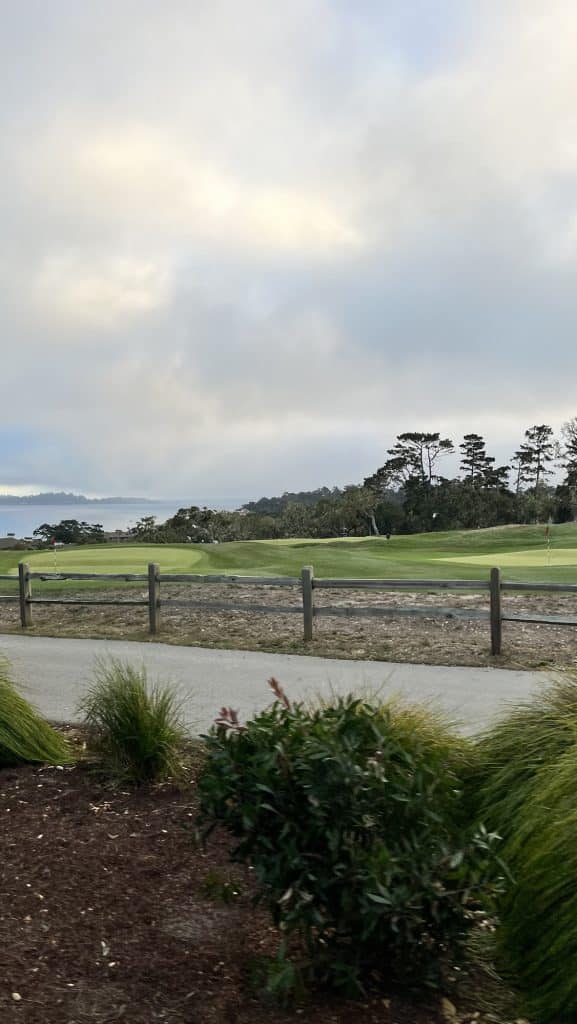
17. Ford Meadow – Stop 17 of the 17-Mile Drive
This peaceful meadow honors Robert F. Ford, a donor to the Del Monte Conservancy.
Our Take: A tranquil but forgettable stop that didn’t leave a lasting impression.
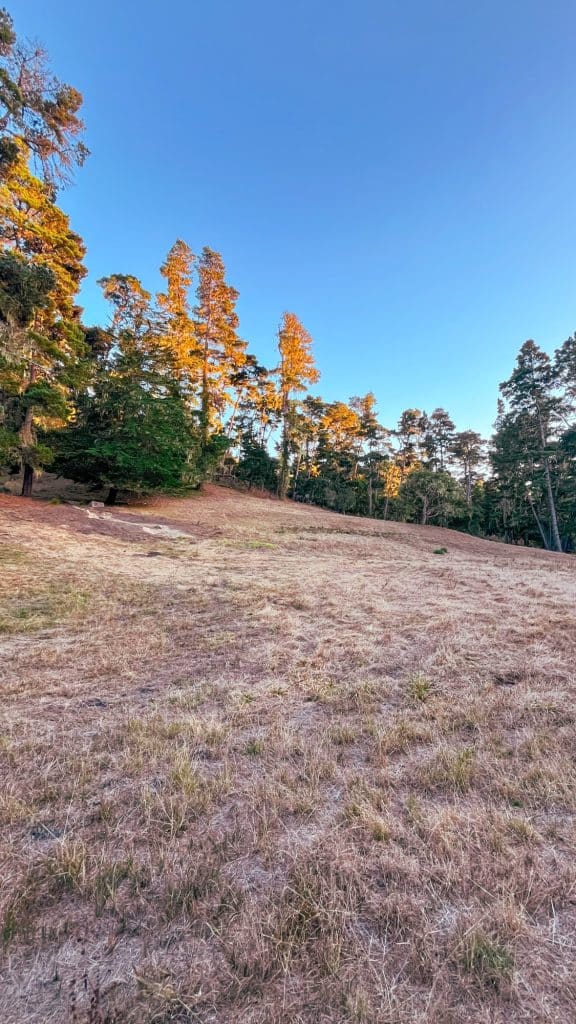
Final Thoughts on the Drive
17-Mile Drive has its highlights—The Lone Cypress and Ghost Trees, in particular—but much of it felt repetitive and underwhelming. For families or non-hikers seeking a convenient way to see California’s coastline, it may be worth the cost. However, nature enthusiasts and budget travelers will likely find more immersive and rewarding experiences at alternatives like Point Lobos State Natural Reserve or Carmel Beach.
FAQs
How much does 17-Mile Drive cost?
$12.50 per vehicle, with credit cards accepted.
Can I bring my dog?
Yes, dogs are allowed but must remain leashed at all stops.
What’s the best time to visit?
Early morning or late afternoon for fewer crowds and better lighting.
Are there alternatives to 17-Mile Drive?
Yes! Point Lobos State Natural Reserve ($10) offers dramatic cliffs, lush trails, and vibrant tide pools. Carmel Beach (free) is a picturesque, dog-friendly beach with white sand and turquoise waves. Both provide a more immersive and cost-effective coastal experience.
How long does the drive take?
Plan for 2-3 hours if visiting all stops or 1-1.5 hours for highlights.
For us, 17-Mile Drive was a mixed experience. If you’re drawn by its convenience or iconic landmarks, it’s worth trying once. Otherwise, California’s stunning coast offers plenty of free or cheaper alternatives to explore.
